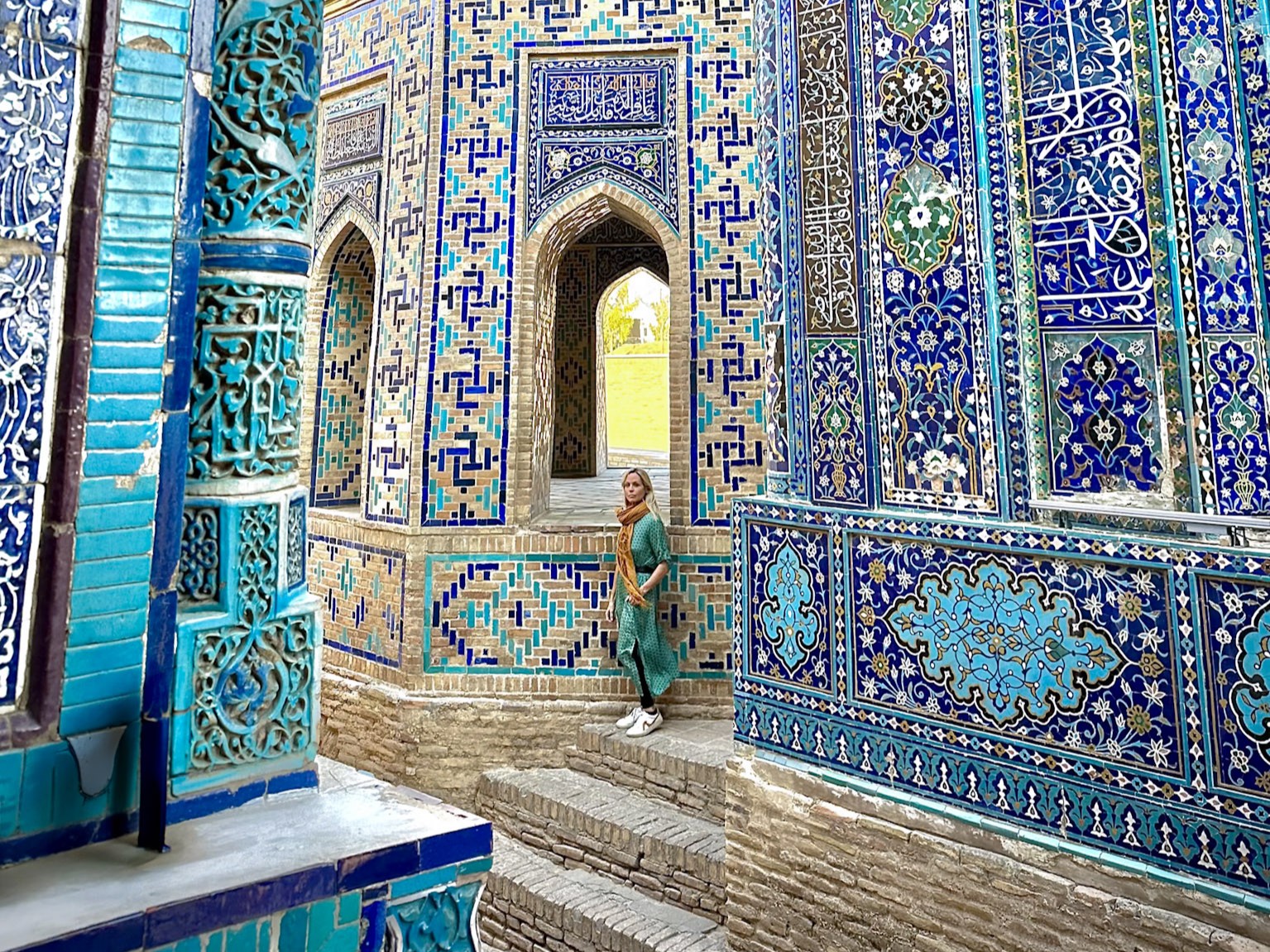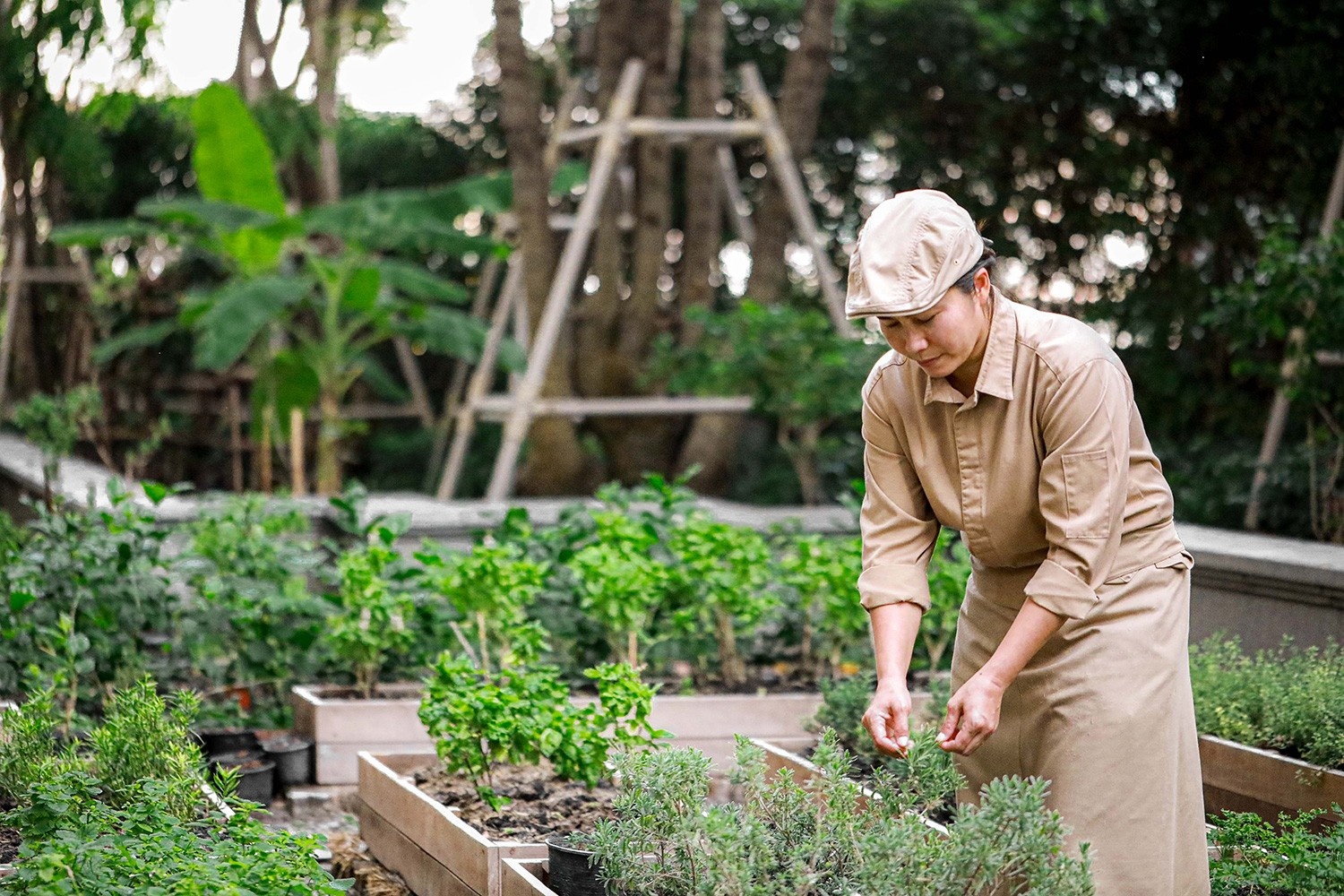NORTH STARS:
Heritage Value
Community Support
Gender Equality
“Craft is function. Craft is beauty. It’s our shared, common life. Something to be held. Touched. Used.”
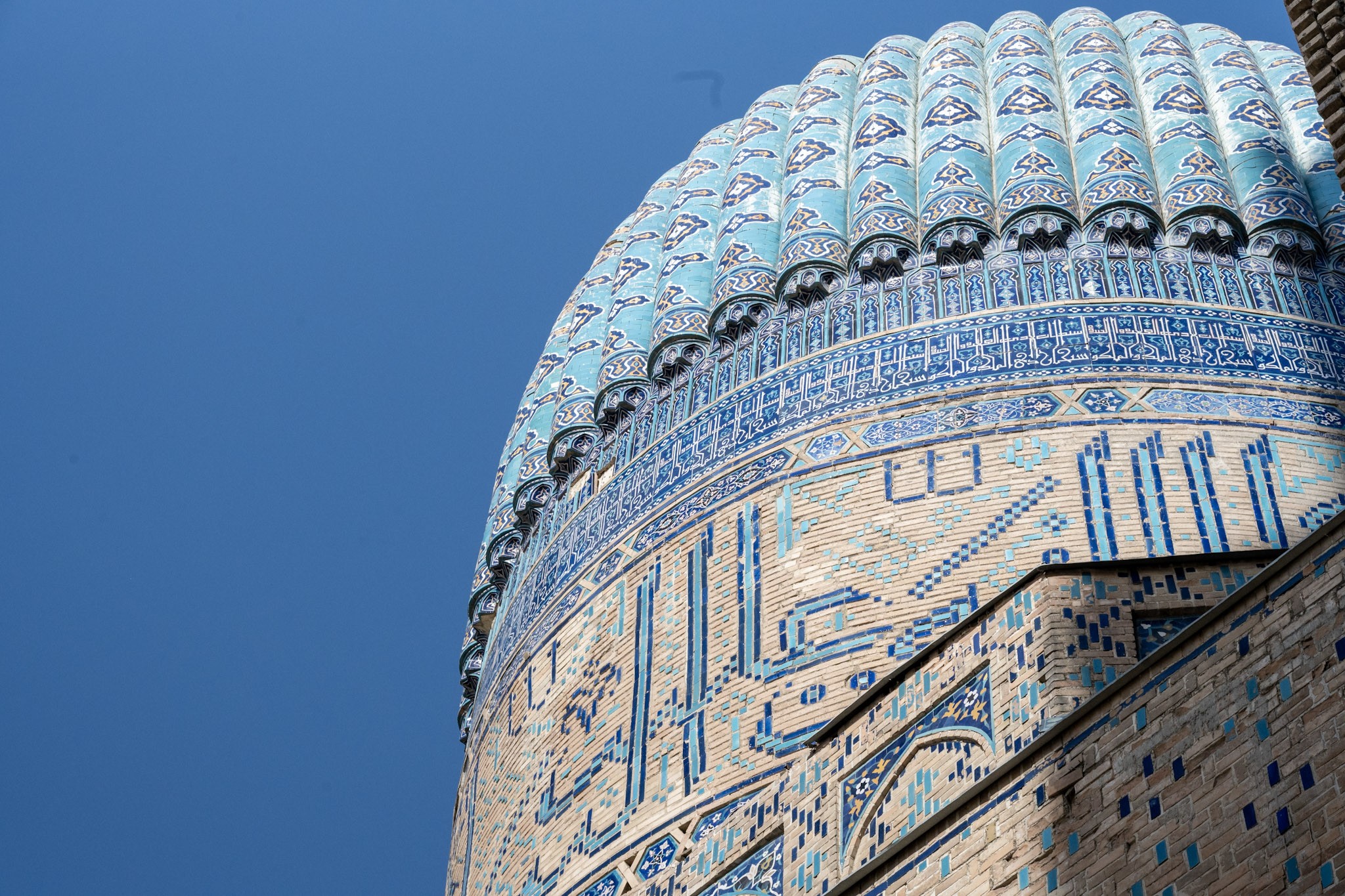
The blue tiled domes found throughought Uzbekistan. Courtesy of Lauren Mowery.
Tashkent greets us not with romance but with Soviet blocks and the sterile malls of modern capitalism. Dust and the brazen late-summer sun cast a muted glow over the city. I search for a story in a photograph, but the streets hide their secrets. After the earthquake of 1966, much of the old heart of Tashkent was paved over.
Our bus slows near an alley. We’re on our way to visit the private atelier of Bibi Hanum, one of the country’s most respected textile designers and a longtime partner of Ibu Movement, the nonprofit leading this journey.
At the front of the bus, Susan Hull Walker stands up and takes the microphone from our guide. Her golden hair brushes her shoulders. Bright green hoops dangle from her ears, echoing her richly hued caftan. Despite her coiffed bohemian style, she projects the calm authority of someone who spent years developing her mission. This mission.
“Today,” she says, “I want you to think about hands.”
The group quiets.
“Every object we’ll see — every thread, every pattern — clothes — was made for hands, by hands, and carries the hand of its maker. Craft is function. Craft is beauty. It’s our shared, common life. Something to be held. Touched. Used.”
She pauses, lets that settle.
“If you see the hand in something today, I hope you’ll share.”

Susan Hull Walker and Ibu Partner Muhayo Alieva. Image Courtesy of Lauren Mowery
The Hands That Bind Us
We file off the bus — some twenty-two women, mostly from Charleston, many of them acquaintances from the city or past trips. Some are in the industry — designers, buyers, retailers sourcing directly from makers. Others simply love textiles, believe in Ibu’s mission, and are here to see the world through this lens. And me. I’ve been invited as a photographer and journalist to document the journey. It’s my second day in Uzbekistan. I don’t know what I’m looking for. I don’t yet know these women. I’ll stand back and observe, I think.
I step out of the uniformity of cement-paved streets and into a bloom of color. Every corner of Muhayo Alieva’s shop is draped in handmade silk clothes – caftans, purses, jackets long and short, dyed in kaleidoscope hues of turquoise, gold, and poppy. The women stir. We’re there to learn, to meet the artist, but the impulse to buy hits like a gust.
I make a joke. “I think we’re on a shopping trip,” I murmur. Susan hears me. “This isn’t a shopping trip,” she quips with a slight grin. “However, if you see something you love, don’t pace yourself. This isn’t a marathon. Buy it.” I’ll later prove an obedient student.
The initial frenzy calms, and we listen. Muhayo tells us her story.
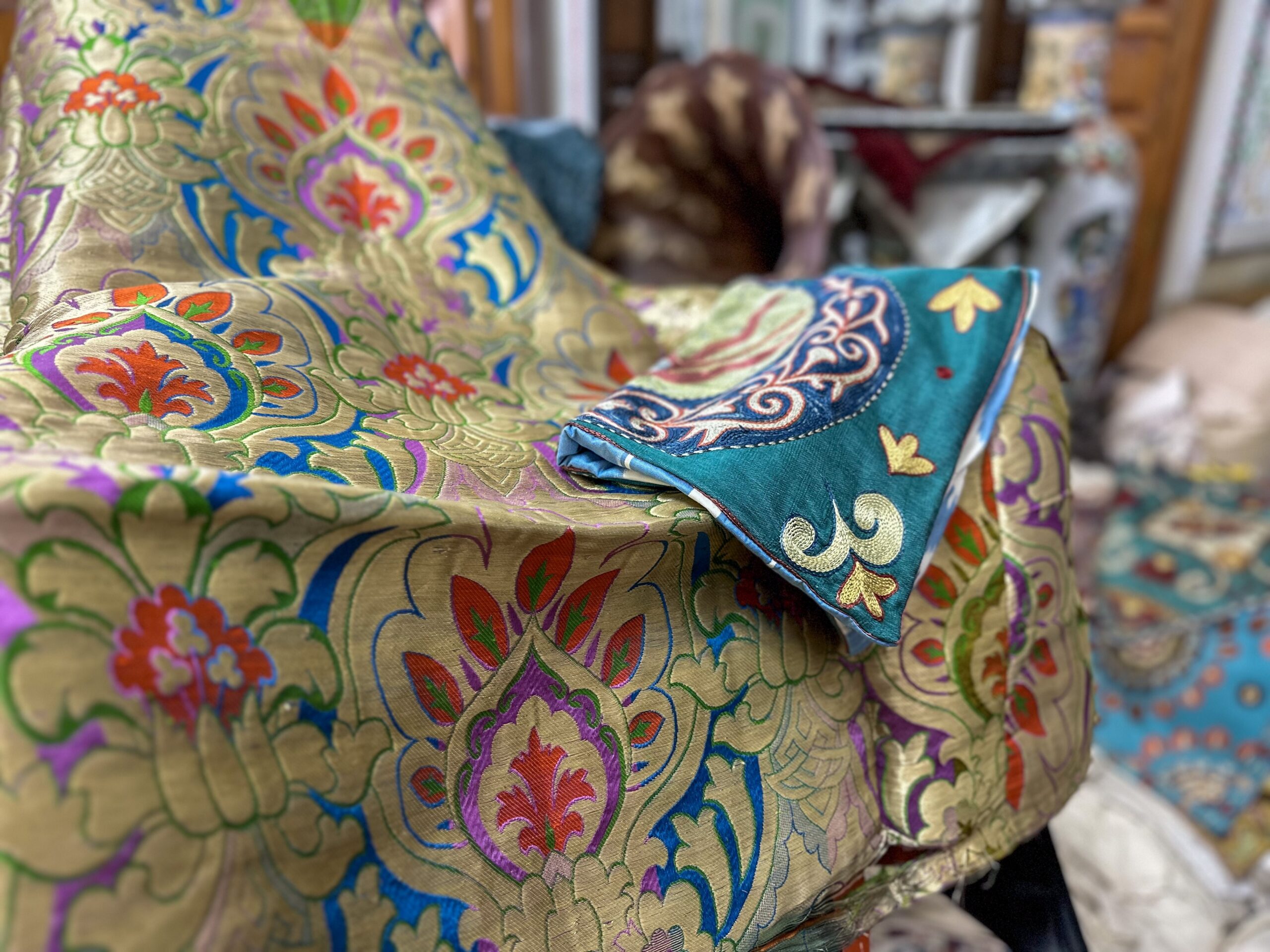
Gorgeous silk embroidery found throughout Uzbekistan. Couresty of Lauren Mowery.
During the Covid-19 pandemic, Muhayo received a grant from Ibu Movement, money that allowed her to purchase the building we’re standing in. Today, she oversees a dozen seamstresses in the upstairs workshop and several more who work from home, some with children who need minding, others with husbands who mind if they leave.
Muhayo has earned acclaim for her work. She sells to tourists, diplomats, and expats. Her expertise focuses on blending traditional pieces like the chipani, a robe typical of the region, with modern cuts and colors. She tracks trends in geometrical designs without straying far from the spirit of Uzbek ikat.
We leave weighted with bags. The assignment — look for the hand — stays with me. Through every city, every courtyard, and every conversation to come, it will shape the way I see not just Uzbekistan but the world that made it.
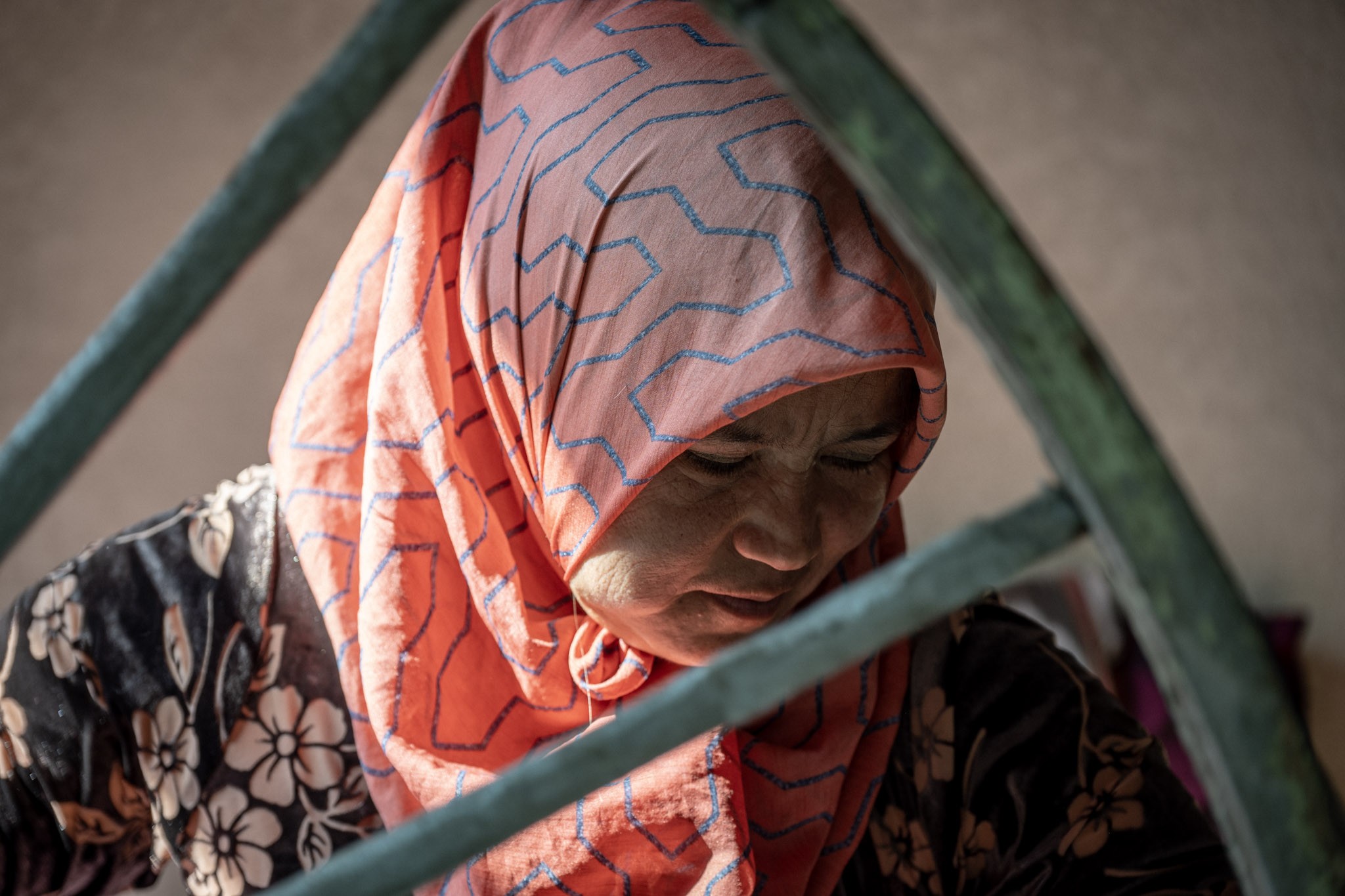
Working on the silk wheel. Courtesy of Lauren Mowery
The Mission Behind the Movement
After several career iterations, including time as a minister, Ms. Walker founded Ibu Movement in 2013. Based in Charleston, SC, Ibu identifies and supports women artisans around the world — women who preserve heritage crafts in regions where industrial knockoffs and economic collapse threaten to erase them. The group brings their work to Western markets through an online shop and a brick-and-mortar boutique on King Street.
But two or three times a year, Ibu brings its most devoted patrons — donors, collectors, allies — directly to the source through the travel arm of the non-profit.
They call the journey The Fringe Road.
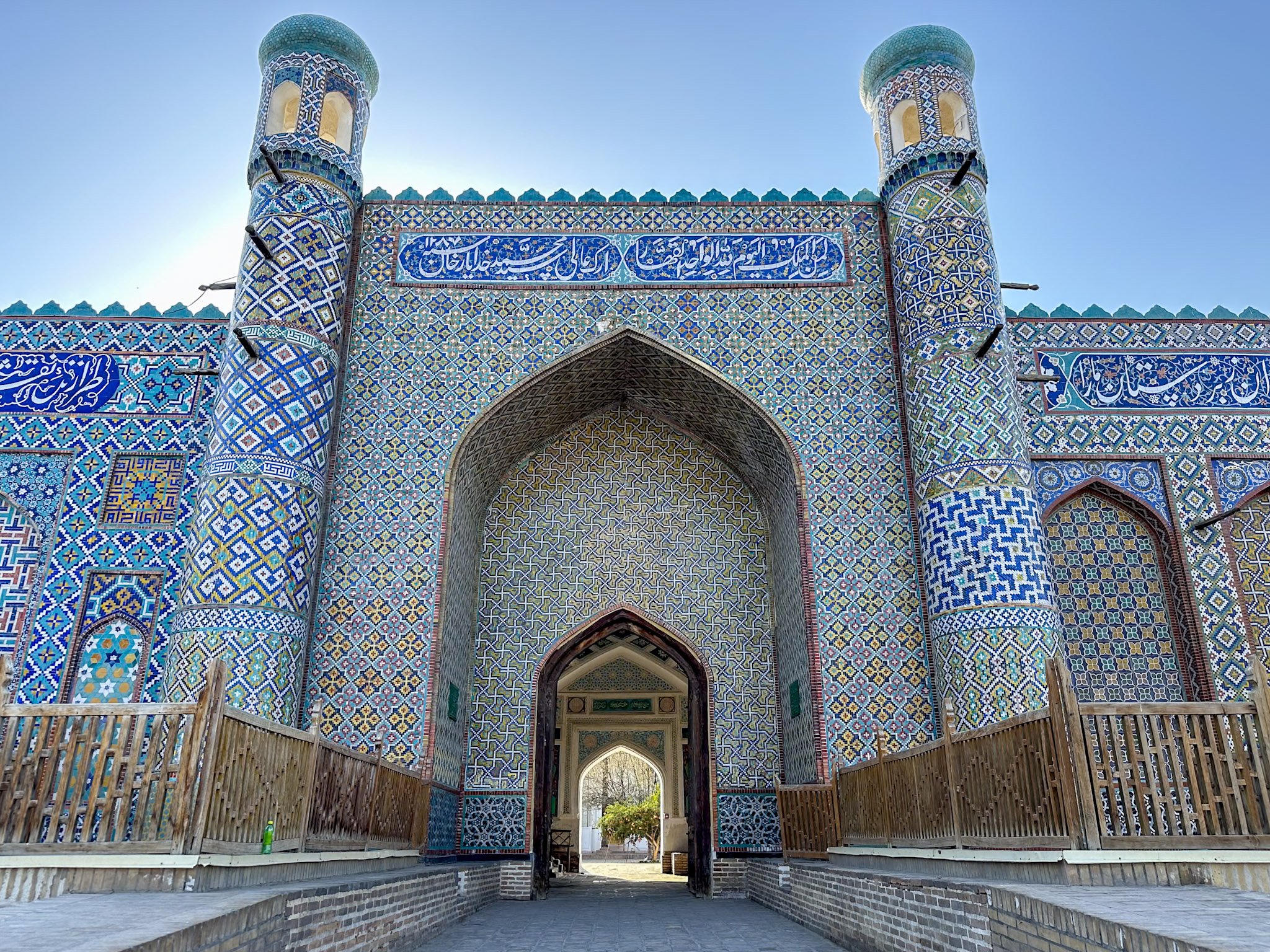
One of many beautiful Islamic buildings in Uzbekistan. Courtesy of Lauren Mowery.
Margilan: Where the Thread Begins
For centuries, Uzbekistan was the crown jewel of the Silk Road. A crossroads for caravans moving between China, Persia, India, and the Mediterranean, it was not only a hub for trade but also a place for the exchange of ideas, faith, craftsmanship, and architecture. Samarkand, Bukhara, and Khiva rose as grand waypoints on this network, their madrassas and mosques mirroring the artistic and scientific advancements of the time. That legacy still pulses through Uzbekistan’s architecture and craft traditions, offering a rare glimpse into a world that hasn’t entirely disappeared.
After the modernity of Tashkent, we head to the humble hinterland of the Fergana Valley and the city of Margilan, Uzbekistan’s epicenter of crafts and silk.
Tourists don’t go to Margilan. Not really. It draws textile lovers and traders. Our guide for the next three days is Aziz Murtazaev, an Ibu partner. He meets us at the Yodgorlik Silk Factory, the largest in Central Asia.
Ikat production requires a laborious 37 steps and 10-12 masters. The pattern isn’t printed or painted. It’s dyed into the threads before weaving. Each bundle of silk is bound and soaked so that, when stretched across the loom, the design emerges like an illusion. The result is never sharp; rather, it’s blurred like memory or motion.
We watch as silkworms cocoons are first boiled to loosen their filaments, then carefully unraveled into long strands of thread, which are spun over a large wooden wheel. We pass the dye stations, and the narrow looms where women work with incredible speed and repetition.
Spinning, dyeing, weaving — many lives touch ikat. The fabrics often have minor imperfections, but that’s a sign of handmade work. The Japanese call this wabi sabi – beauty in imperfection; a reminder of our impermanence.
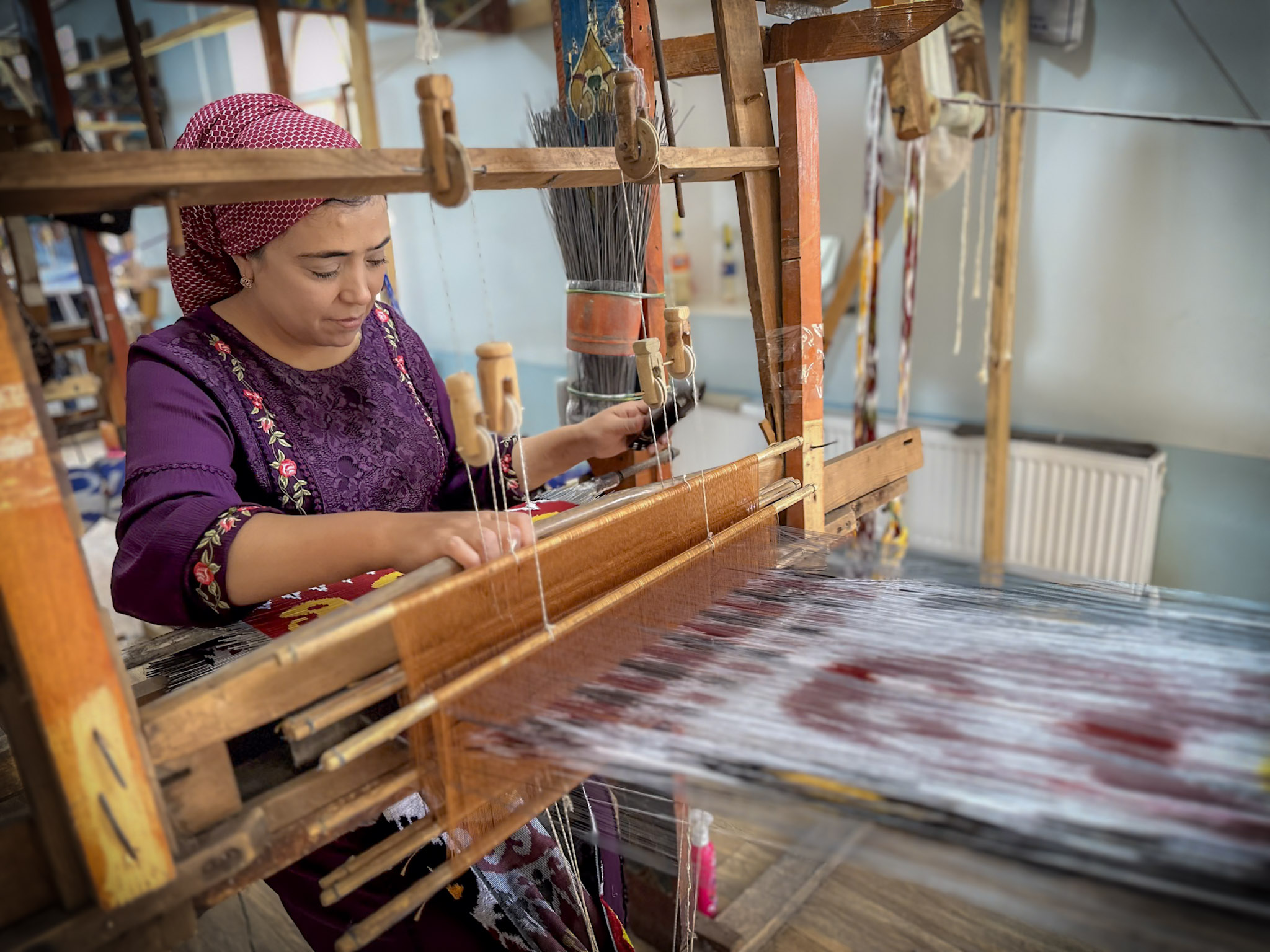
A weaver in Margilan. Courtesy of Lauren Mowery.
As we wander between looms, admiring patterns, the women’s eyes tick up. They watch me. Their hands keep moving. I crouch with my camera to capture one woman’s foot rhythmically pumping the treadle. She momentarily breaks character. A faint smile crosses her lips. We nod in silent acknowledgment before I skip off to catch my group.
Aziz leads us through it all, precise and serious. He explains how Ibu’s support allowed him to grow — not bigger, but better. “I don’t want to compete with cheap copies,” he says. “I want people to know what real feels like.”
In his model, artisans can work part-time, weave from home, stay near their children. Autonomy through flexibility is a form of empowerment.
That night, we have dinner in Aziz’s garden. His wife cooks; his children dance barefoot. A few of us slip off our shoes and join them, clapping along to folk songs. For a few hours, the distance between us closes. A window into another world, opened.
After we eat, Aziz unlocks his shop. Excitement spreads like flames on a parched field. “We’ll have access to his fabrics,” I overhear. I follow the women into the tight space and watch bolts of cotton and silk fly around the room. I clutch a swath of pink and gray ikat to my chest, trying to imagine what I’d do with it back home.
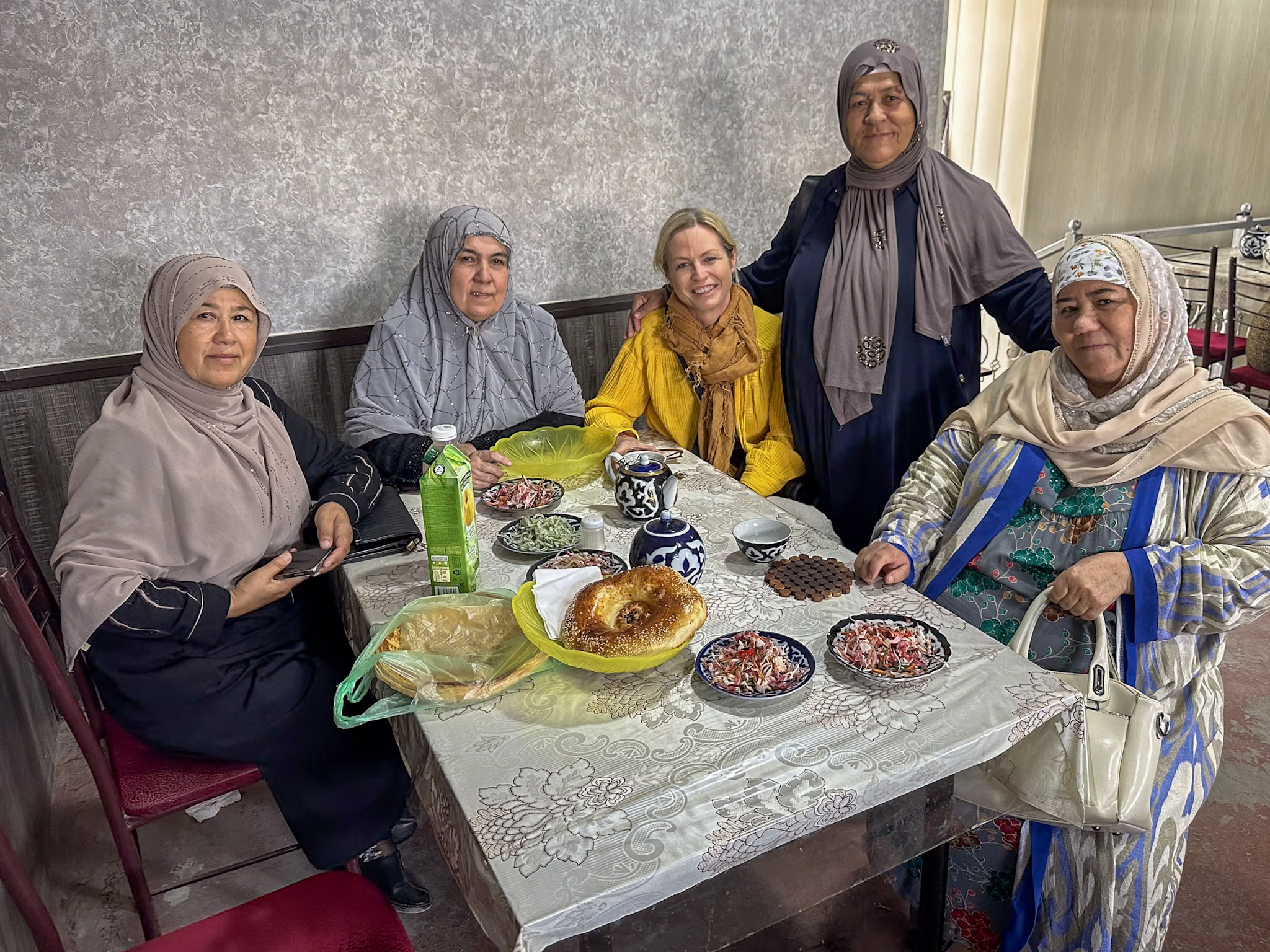
Having tea with locals in the Kum Tepe market . Courtesy of Lauren Mowery
The next morning, we drive to Kum Tepe, a market in Margilan.
The bazaar stretches for miles — indoor shops trade in real silk displayed next to machine-made printed scarves. Beyond them, open-air stalls are packed with parts for fixing bikes, rewiring stoves, repairing shoes. Every piece looks salvaged, sorted, ready for reuse. In theory, it reflects what the modern world should be: circular and resourceful, built on repair rather than replacement. And yet, it feels like a post-apocalyptic barter zone — less like sustainability, more like survival. A glimpse of what the world might look like if convenience collapsed.
Samarkand’s Heavenly Blues
Most travelers visit Uzbekistan for its Islamic cities and monuments. I, too, dreamed of Uzbekistan for its intricately tiled towers and mosques dressed richly in turquoise and cobalt. Blue has always called to me. It’s why I named my magazine after a shade of the sky.
Though we’ve come to Uzbekistan to meet Ibu’s artisans, we’d be remiss to skip the country’s architectural marvels. In Samarkand, the old city rises like something out of a myth: domes shimmer, mosaics fracture the sunlight.
You can’t move through Uzbekistan without feeling the long gaze of Timur ibn Taraghay Barlas. He was a warlord, strategist, and builder who ruled in the 14th century, forged an empire, and made Samarkand his capital. He pulled artisans from 27 conquered lands to build monuments designed to outlive him.
At the Registan, we stand before three madrasas: Ulugh Beg’s, with its astronomical motifs; Sher-Dor, with its symmetry; and Tillya-Kori, lined in gold. Inside Tillya-Kori, I encounter a mosque so richly hued it feels like I’ve ascended into the heavens. Patterns repeat and shimmer, dissolving into geometry so intricate it feels infinite. I finally gaze up at the jeweled sky, pausing to appreciate rather than capture. “It’s just so beautiful,” says Sarah, a textile and suzani retailer from New Orleans, traveling with her mother and business partner, Rebecca. Tears stream down her face. The sublime can undo you in an instant, I think.
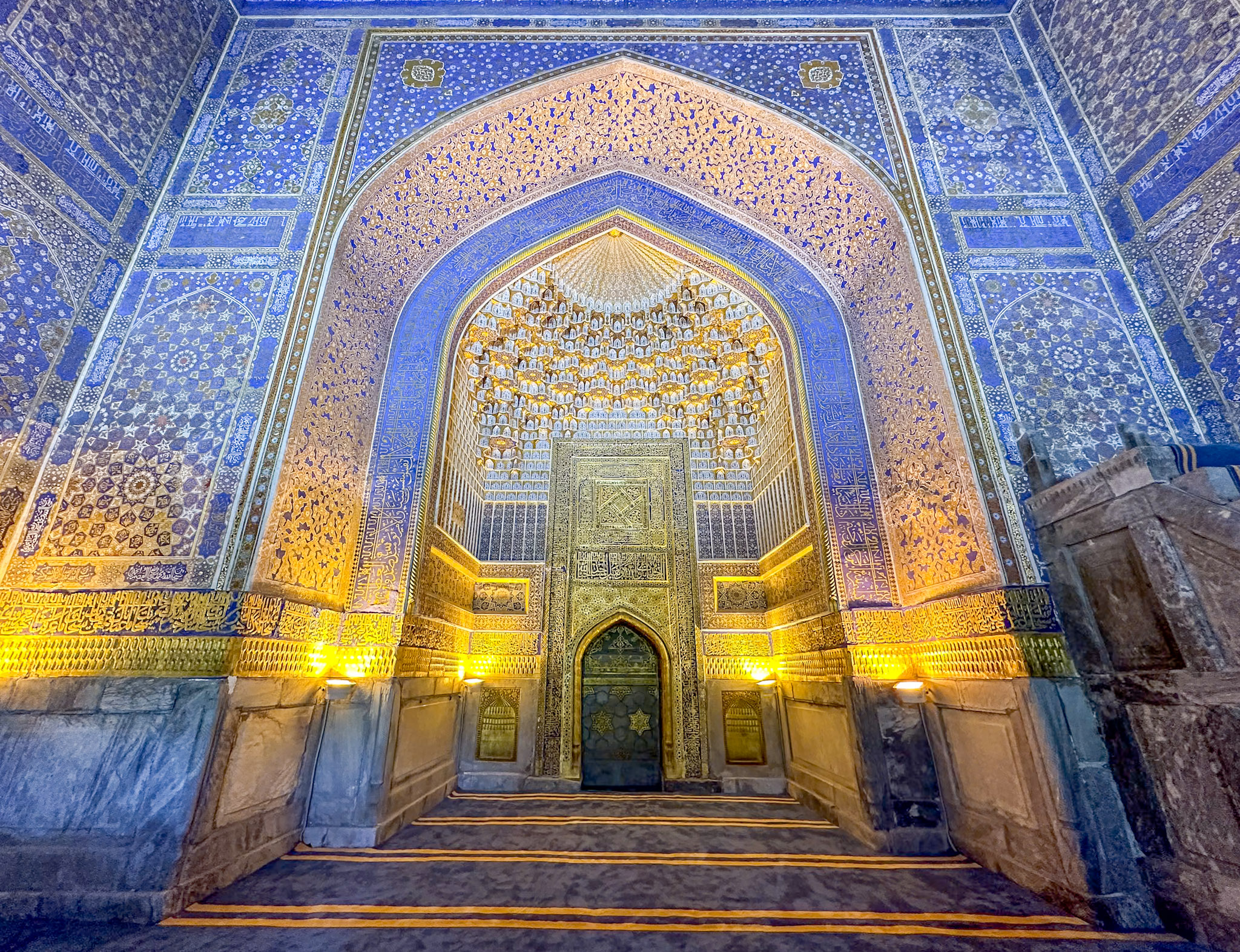
The stunning interior of inside Tillya-Kori. Courtesy of Lauren Mowery
That afternoon we have lunch at Samarkand Arts Café and Studio, owned by Nargis Bekmukhamedova. A Tajik architect turned designer, Nargis repurposes antique textiles to create clothing and accessories that sell in her shop attached to the café she owns. Proceeds benefit a local deaf children’s school. It’s the perfect stop before encountering the magnificent Bibi Khanum Mosque and Shakhi Zinda site, which consists of eleven mausoleums built between the 14th and 15th centuries.
That evening, we board the train to Bukhara, a city once central to the Silk Road. The light in the car softens as the sun begins to dip, painting the windows gold. Conversation fades. People grow quiet. Gravity pulls us west.
Into Bukhara’s Golden Past
Once, Bukhara served as the hub of the Silk Road, attracting scholars, mystics, and merchants who freely exchanged ideas, faith, and goods across empires. Islam flourished early here, and for centuries, the city balanced trade and spirituality in equal measure.
Though we’ve come for the artisans, we visit a few iconic sites. The Ark Fortress, a citadel from which emirs ruled for over a millennium, still looms above the old town. Nearby, the Bolo Hauz Mosque, built in 1712, is one of the few working mosques from that era, known for its carved wooden columns and tranquil courtyard.
Deeper into the old city, we reach the Po-i-Kalyan complex, made up of the Kalan Mosque, the Mir-i-Arab Madrasah, and the towering Kalan Minaret. Built in 1127, the minaret rises 153 feet. Legend says Genghis Khan found it so striking he ordered it spared during the Mongol invasion.
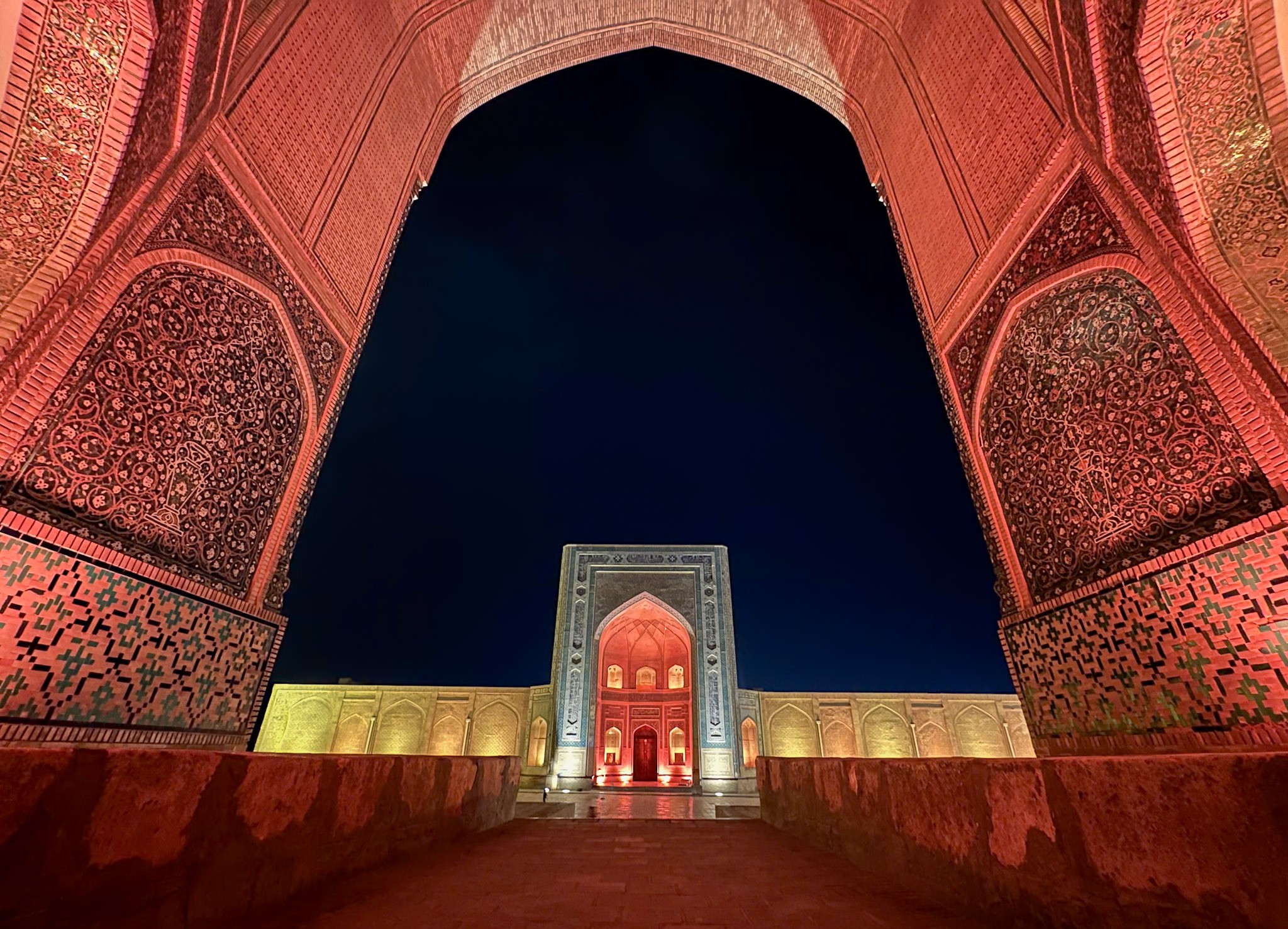
Po-i-Kalyan complex in Bukhara at night. Courtesy of Lauren Mowery
By day, the tower cuts an impressive sight. But at night, when the entire square is bathed in soft amber and pink uplighting, it feels otherworldly. I return later with my Nikon.
Two women from our group — Cheryl, a designer from Charleston, and Sarah, a textile dealer from New Orleans — come with me. We sit on a low step near the mosque, the minaret glowing like a lighthouse from another era. The square is quiet. We talk about our lives back home, how we came to be here, what drew us to this odd, beautiful place. Something shifts in the silence between stories. Acquaintance to friendship.
The Language of Suzanis
The next day: silk, embroidery, shopping. Suzanis.
A suzani is more than fabric. Traditionally made by women across Central Asia, it’s a stitched language of hope and memory. Suzanis were part of a young woman’s dowry, their patterns rich with meaning: pomegranates for fertility, poppies for happiness, tulips for life, suns for endurance. A good suzani might take months to complete. That kind of patience makes them rare — and, in the U.S., worth thousands of dollars.
Akhmad Arabov, a textile wholesaler, welcomes us into his showroom. It’s set in a traditional Bukharan Jewish home, once a private space for cultural preservation. This one is no exception. The walls and ceilings are painted in colorful patterns of floral and geometric motifs. Intricate niches in the plaster hold ornamental ceramics and vessels. Arabov works surrounded by bolts of fabric, jackets, and oversized tapestries. Eyes widen at the piles of hand-stitched riches. We dig in like prospectors, bargaining with millions of Uzbek som — a few hundred dollars’ worth. One woman climbs atop a pile, throwing her arms open like a queen on her silken throne. I snap her photo. We laugh at our strange, good fortune.
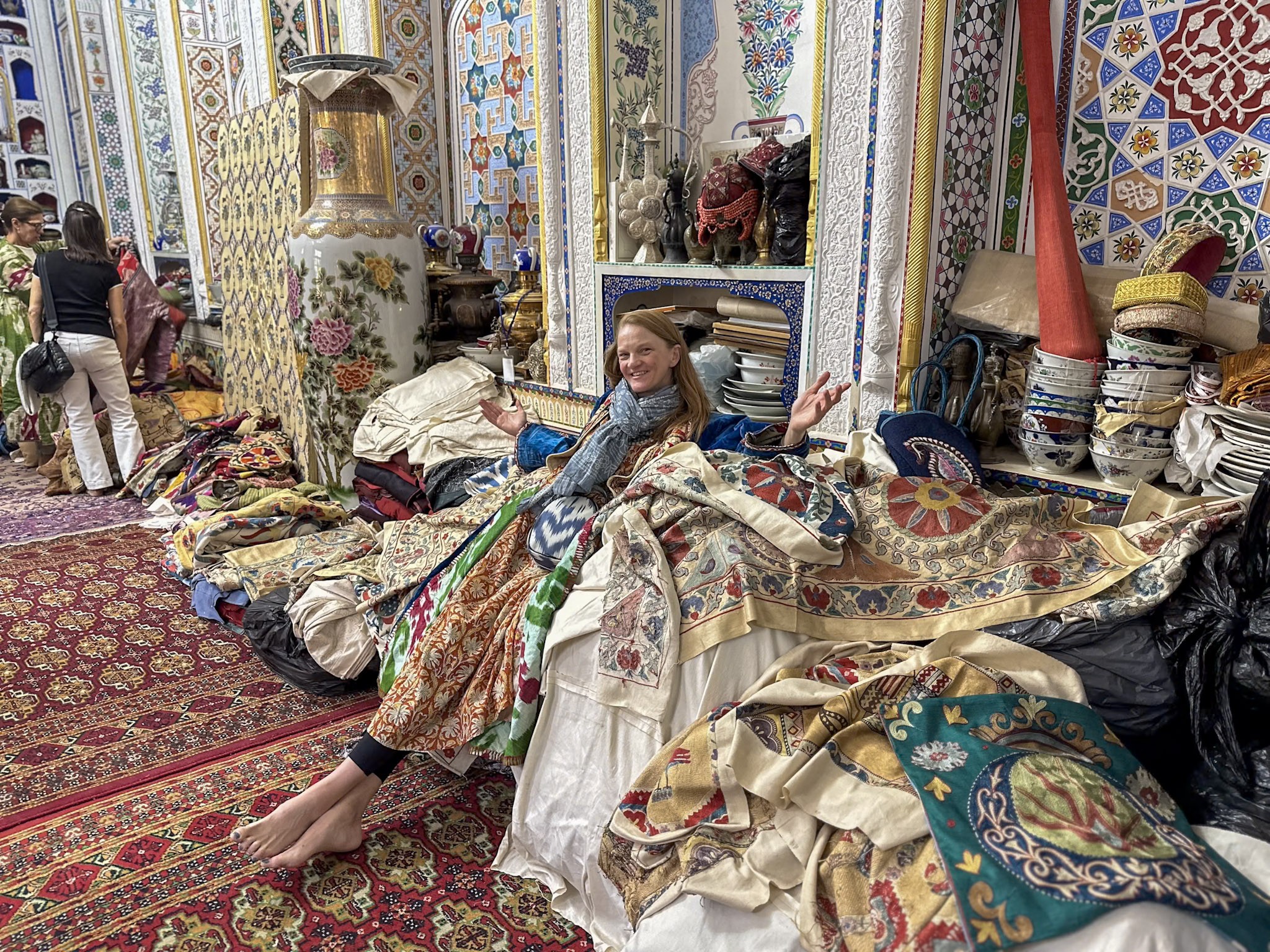
Sarah on a pile of fabrics a tAkhmad Arabov's studio. Courtesy of Lauren Mowery.
Later, we meet Zarina Kendjaeva, a master dyer and embroiderer. She doesn’t have a store, but her participation in the International Folk Art Festival caught Ibu’s attention. Pillowcases, coats, and caftans line an ancient courtyard, forming a private bazaar for our group to peruse. She explains the motifs: historical patterns made modern through color. It’s nearly the last chance to shop, and yet many women have filled second and third suitcases with their purchases.
The day ends at Akbar House, another 19th-century Jewish merchant’s home. From the street, it’s invisible. Inside, a courtyard opens under elm columns and a honeycomb-vaulted ceiling. Our host, bright and theatrical, welcomes us with a plov demonstration. As the rice simmers, she spreads suzanis and robes for us to admire. I throw on a black-embroidered coat, which leads to an impromptu fashion show. We walk the room, grinning, strutting. Our Uzbeki catwalk.
We sit on cushions around low tables, eating traditional bowls of rice and bread under soft lights, listening to stories of life in Bukhara before heading back to the hotel. Somehow, I need to pack jackets, fabric, and pottery into my carry-on like a Tetris puzzle.
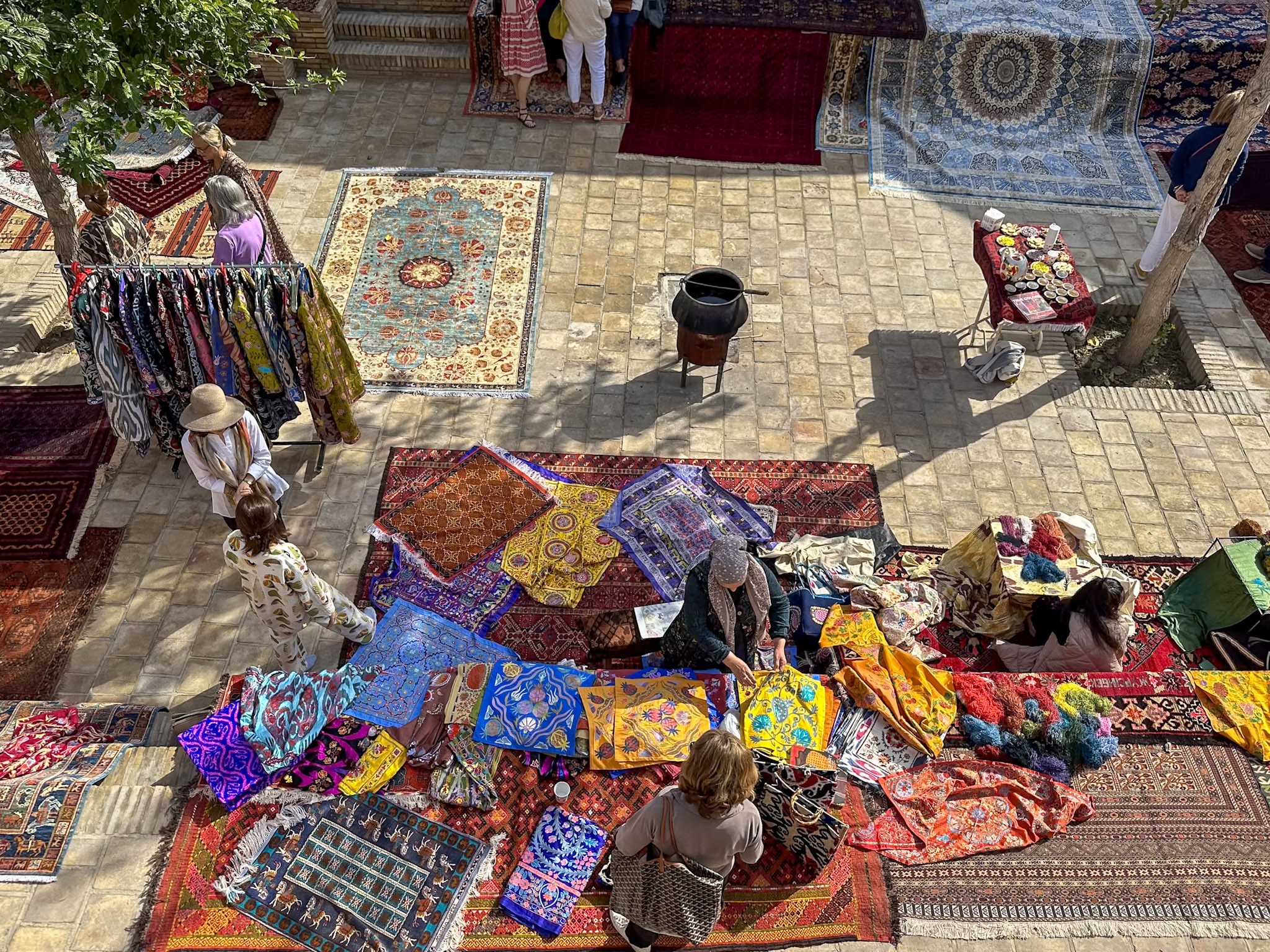
Piles of fabrics displayed in an ancient courtyard in Bukhara. Courtesy of Lauren Mowery.
Farewell, For Now
The next day, we hug goodbye. Some cross the border to Turkmenistan. The rest of us head to the airport.
We all leave heavier. Not from the plov. Not from the fabrics. We leave with the weight of memory — of hands pulling thread, stitching patterns, preserving what’s easily lost. When we lose craft, we lose part of our humanity. The convenience of Amazon or the inconvenience of workmanship: which world do we want to live in? We have a choice.
The Fringe Road brings travelers to the origin of that choice. Ibu Movement brings that choice to dreamers and believers at home.
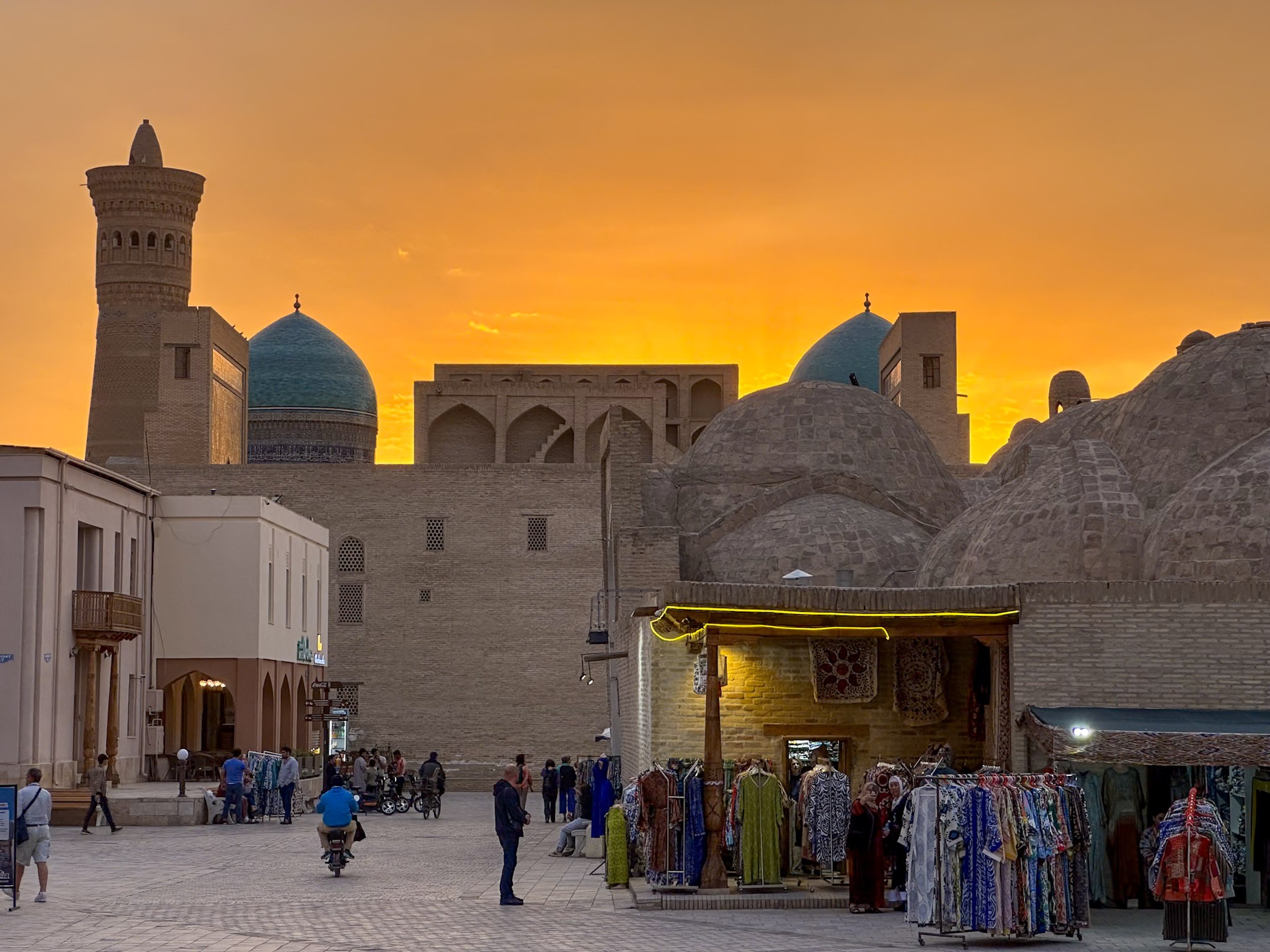
Sunset over Bukhara, Courtesy of Lauren Mowery.
About Ibu Movement & The Fringe Road
Ibu Movement is a Charleston-based nonprofit that partners with women artisans around the world to preserve heritage crafts and bring their work to a global audience. Through grants, design collaboration, and retail support, Ibu creates economic opportunities for women and celebrates their cultural traditions. The Fringe Road is the travel arm of Ibu, offering immersive trips that connect supporters with the artists behind the work. These journeys provide not just a shopping experience but a chance to understand the stories, techniques, and communities behind each handcrafted piece.
The Fringe Road worked with Tarin Wilson of planAevents to organize the two-week program. Wilson designs exclusive journeys to destinations near and far, focusing on extraordinary experiences and private access for like-minded travelers.
Travel to Uzbekistan
Uzbekistan is increasingly accessible to travelers, with relaxed visa rules for many countries and improved infrastructure. Spring and fall are the best times to visit, offering mild weather and vibrant markets. Tashkent, Samarkand, and Bukhara are well-connected by high-speed train, and local guides are invaluable for navigating historical sites and workshops. Pack modest clothing, extra suitcase space, and cash — especially in markets and small studios. English isn’t widely spoken, but smiles and interest in craft go a long way. Flight options from the USA include Turkish Air through Istanbul or United Airlines through Dubai, connecting with Fly Dubai. Direct flights from New York City only on Uzbekistan Airlines.
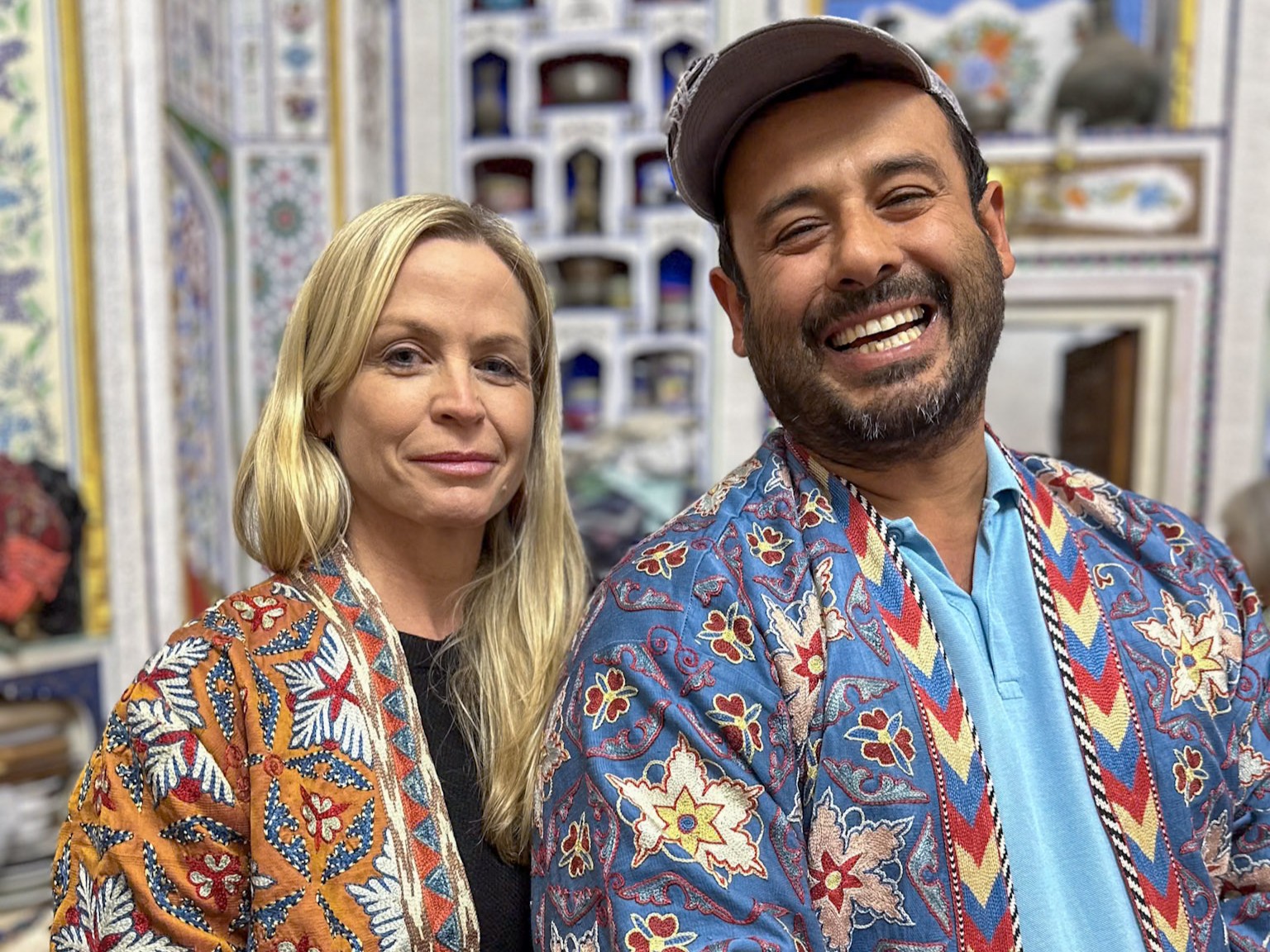
Trying on jackets with textile wholesaler Akhmad Arabov. Courtesy of Lauren Mowery.
Artisans Visited
- Muhayo Alieva: Founder of Bibi Hanum atelier in Tashkent, blending traditional ikat with modern fashion.
- Madina Kasimbaeva: Suzani artist in Tashkent, known for her contemporary interpretations of traditional embroidery, preserving age-old techniques through detailed, expressive stitchwork.
- Rustam Usmanov: Master ceramicist in Rishtan known for his distinctive blue-glazed pottery, made using local clay and natural mineral pigments. His family-run workshop is a cornerstone of the region’s centuries-old ceramic tradition and served as the setting for an unforgettable dinner and demonstration during our visit.
- Yodgorlik Silk Factory: Margilan-based collective producing hand-dyed, handwoven ikat using centuries-old methods.
- Aziz Murtazaev: Textile artisan and workshop owner in Margilan, Ibu partner and host.
- Arts Café and Studio by Nargis Bekmukhamedova: Former architect turned designer creating clothes and accessories with antique textiles.
- Akhmad Arabov: Suzani textile wholesaler in Bukhara, working from a historic Bukharan Jewish home.
- Zarina Kendjaeva: Master dyer and embroiderer in Bukhara, known for blending historical motifs with contemporary flair.
- Akbar House Artisans: A rotating group of textile and suzani artists who showcase their work in a historic merchant home.
- Feruza Ikat Gallery: A charming boutique gallery in Bukhara offering a curated selection of high-quality handwoven ikats and textiles. Feruza has impeccable taste and can custom tailor any piece within 24 hours.
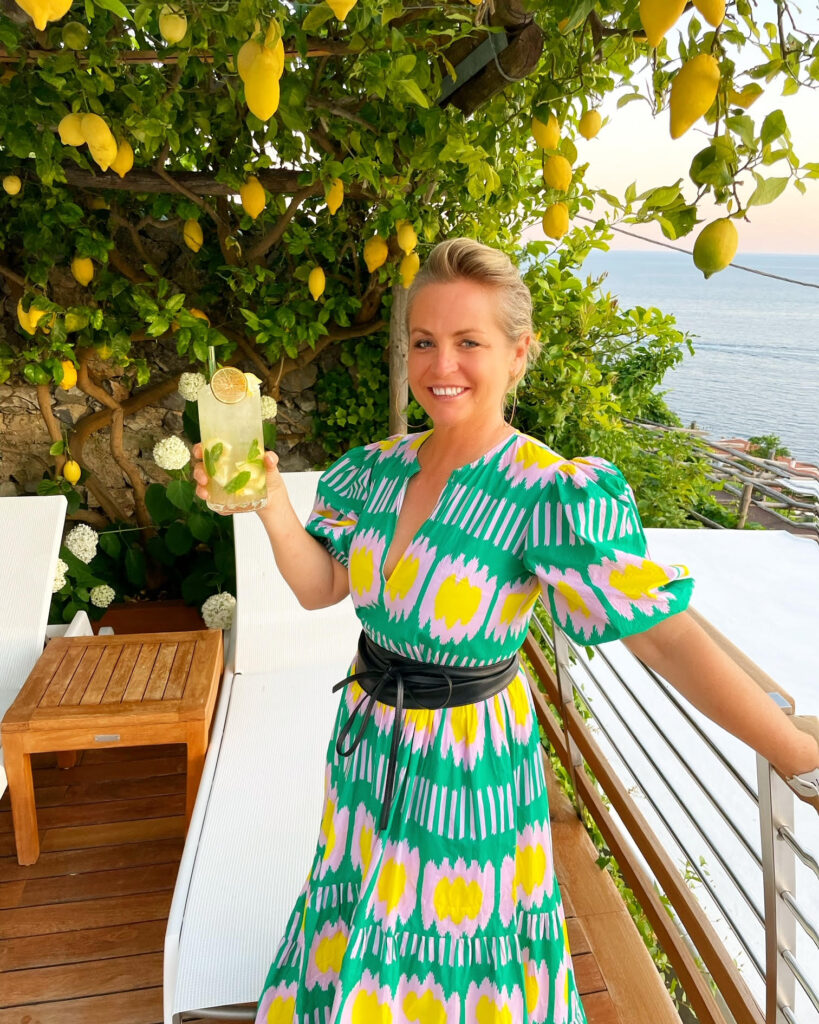
Founder and CEO of Azure Road, Lauren Mowery is a longtime wine, food, and travel writer. Mowery continues to serve on Decanter Magazine’s 12-strong US editorial team. Prior to joining Decanter, she spent five years as the travel editor at Wine Enthusiast. Mowery has earned accolades for her writing and photography, having contributed travel, drinks, food, and sustainability content to publications like Food & Wine, Forbes, Afar, The Independent, Saveur, Hemispheres, U.S. News & World Report, SCUBA Diving, Plate, Chef & Restaurant, Hotels Above Par, AAA, Fodors.com, Lonely Planet, USA Today, Men’s Journal, and Time Out, among others.
Pursuing her Master of Wine certification, she has also been a regular wine and spirits writer for Tasting Panel, Somm Journal, VinePair, Punch, and SevenFifty Daily. Mowery is a graduate of the University of Virginia and Fordham Law School, and she completed two wine harvests in South Africa.
Follow her on Instagram @AzureRoad and TikTok @AzureRoad
North Stars: Community Support, Gender Equality, Heritage Value


